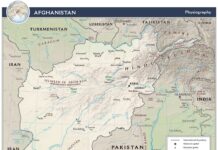Context
 Two assassination attempts were recently made on the life of pro-Taliban leader of Jamiat Ulema-e-Islam-F (JUI-F) Mowlana Fazulur Rehman. The first attack took place near Swabi on March 30th, while the other occurred the next day in Charsada. Almost 20 people were killed in these two attacks. Pakistan’s history is full of political assassinations; however, the attempt on Mowlana’s life is especially peculiar.
Two assassination attempts were recently made on the life of pro-Taliban leader of Jamiat Ulema-e-Islam-F (JUI-F) Mowlana Fazulur Rehman. The first attack took place near Swabi on March 30th, while the other occurred the next day in Charsada. Almost 20 people were killed in these two attacks. Pakistan’s history is full of political assassinations; however, the attempt on Mowlana’s life is especially peculiar.
Although Mowlana Fazul Rehman has not blamed anyone yet, two prominent explanations have circulated the media. One of these blames the ISI and the other CIA. These analyses have failed to take in to account the divergent threat perceptions of these two intelligence organizations, which is causing increasing mistrust between various factions of extremists. These internal strifes could also have resulted in these attacks. Additionally, one also needs to understand the emerging dynamics of Afghanistan and Middle East.
Analysis
Groups with Local or Global Agenda
As it relates to the relation between Afghan and Pakistani Taliban (TTP), two predominant views have emerged. Some analysts and columnists in Pakistan have recently presented the argument that there is no relation between the two. On the other hand, Western media has long propagated that cross-pollination between Pakistani Taliban, Afghan Taliban, Punjabi and Kashmiri Jihadist, and Al Qaeda, has been occurring with potentially dangerous consequences. It is this threat that led US to announce a reward of $5 million, for anyone providing information leading to the arrest of Ilyas Kashmiri, the head of terrorist organization Harkatul Jihad al-Islami (HUJI).
A distinction US has especially used, to interpret the risk these different groups present, is to classify them based on if they pose a regional or global a global threat. For example, since the Mumbai incidence, senior US officials have repeatedly asserted that Lashkar-e-Tayyiba (LeT) is increasingly a global threat, and their orientation has become similar to Al Qaeda. On the other hand, TTP has also not shied away from its global aspirations, but its capacity in this regard is believed to be lacking.
Nonetheless, TTP has previously claimed that it would be targeting Pakistani politicians. TTP has stated that as long as drones target the group, it would also continue with carrying on attacks against civilians in major cities of Pakistan. In this context, recent statement from Mullah Omar was significant, which condemns groups that target civilians. It was clearly an attempt to distinguish Afghan Taliban associated with Mullah Omar, from Pakistani Taliban.
The US Afghan Strategy
The emphasis of the US ‘surge strategy’ in Afghanistan has been to work on both the military and political solution, dealing with the safe havens in Pakistan and to negotiate with the Taliban from a position of strength. Additionally, US also laid down criteria for which groups it was willing to reconcile with: those that would terminate ties with Al Qaeda, lay down arms, and accept the Afghan constitution.
The US strategy also envisioned that as the military surge geared in to action in Afghanistan, the pressure exerted by Pakistan army in FATA would accompany it. However, as tactics unfolded, Pakistan acted against some factions of extremists and not against the others. Additionally, the success of drone tactics has also been dependent on cooperation from Pakistan. The government has frequently criticized UAV attacks, particularly when it targets the factions Pakistan consider an asset. These groups particularly included the Afghan factions of Taliban, such as Haqqani network and Quetta Shurra. The country also did not act forcefully against Punjabi jihadist, as demanded by India after the Mumbai incident. Short of full cooperation from Pakistan, US began to expand its covert war with in the country, which recently got exposed in the form of Raymond Davis incident.
The Future
As things stand now, each party distrusts the other regarding its intent. US has wanted to divide various extremist factions so as to weaken their efficacy, while Pakistan desires to protect groups and leaders that toe its line but not others. The resulting environment has been perplexing for the extremists as to who they can believe. For example, The New York Times has reported recently that powerful Afghan commanders in and around Quetta have been targeted and killed, but it’s not clear by whom. In short, the report claims, Pakistan is no longer a safe haven it once was.
On the other hand, General Kiyani reacted strongly to the drone attack of March 17 in Datta Khel area of North Waziristan. That attack appears to have targeted Hafez Gul Bahadur, a group has a treaty with the Pakistan army. The drone campaign has remained suspended eversince. Meanwhile, Pakistan has initiated its own peace deals in FATA, exemplified by the recent treaty in Kurram Agency. According to media reports, that deal would not have been possible without the involvement of the Haqqani network.
With the Middle East uprisings increasingly taking the color of Shia-Sunni divide; the need for proxies is once again emerging. Just as US would like to speed up its campaign against Al Qaeda and groups affiliated with it, preventing them from exploiting the uncertain situation in Middle East and North Africa, operations are slowing down in FATA and Yemen.



